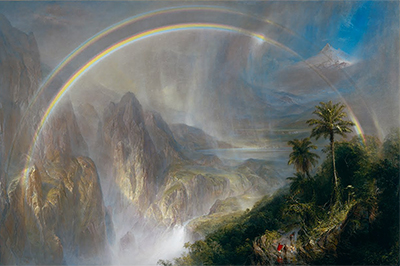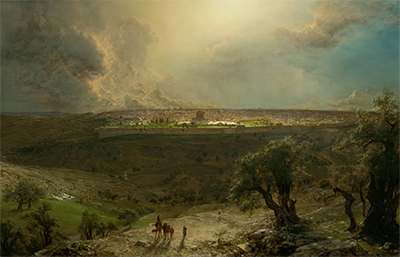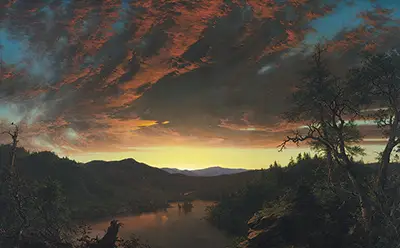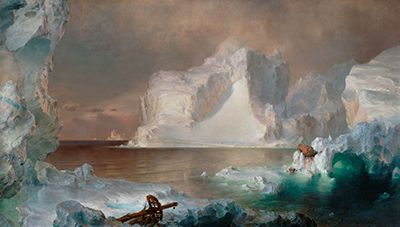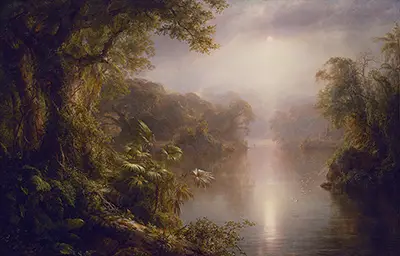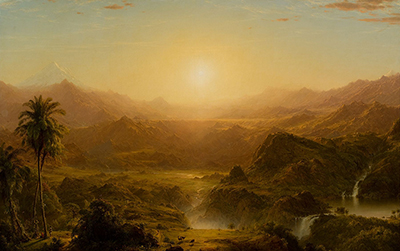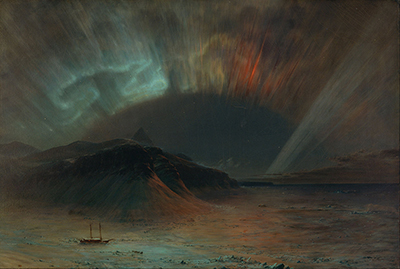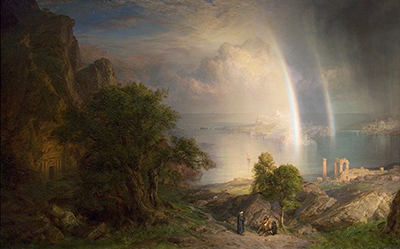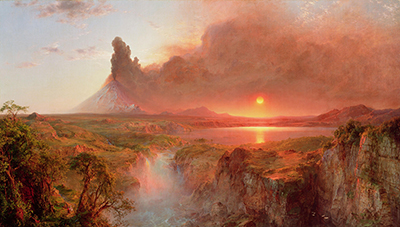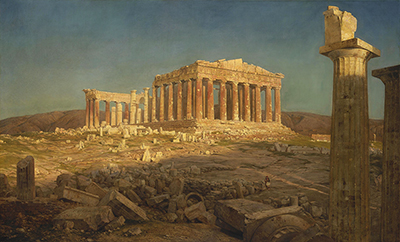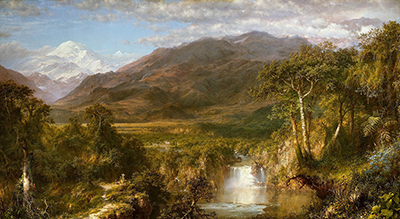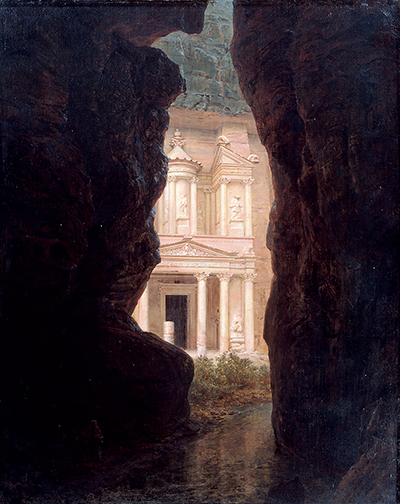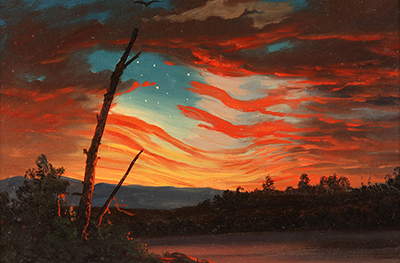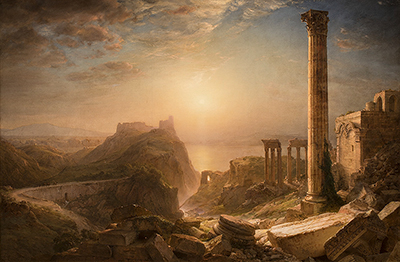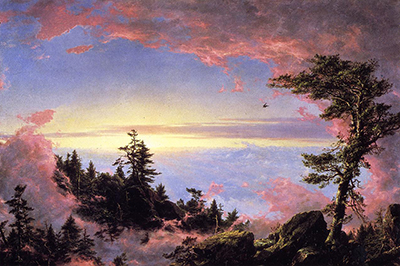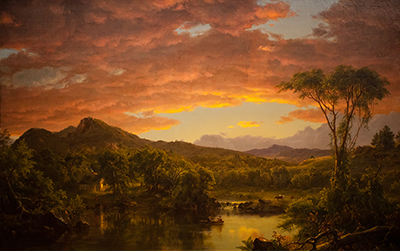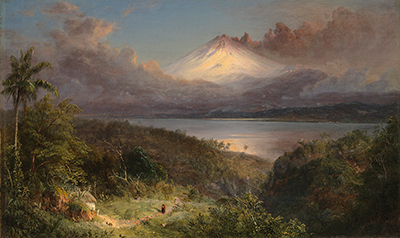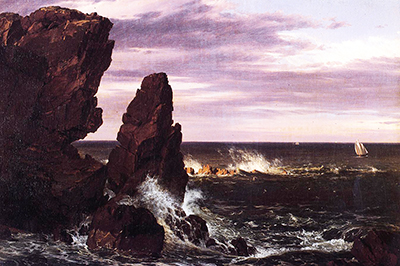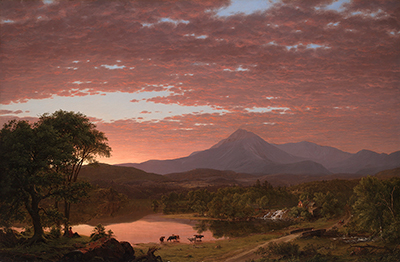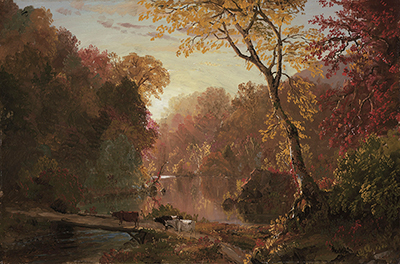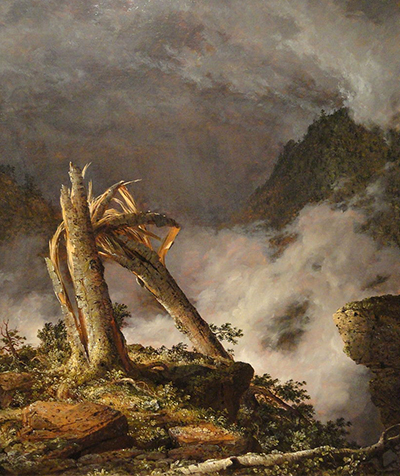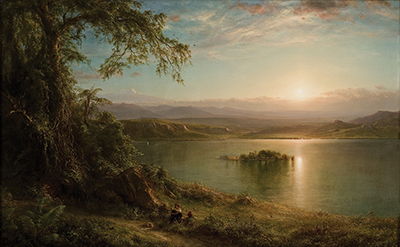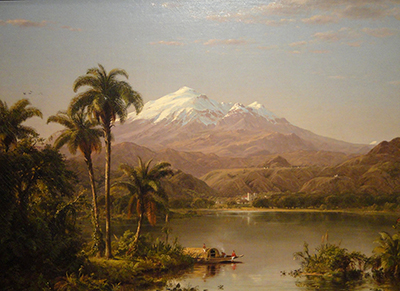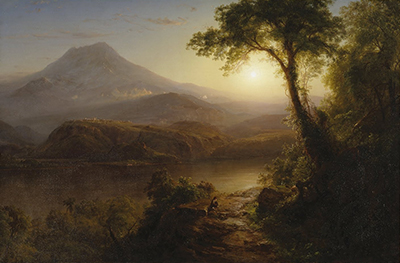Frederic Edwin Church was famous for the precise detail of his landscape paintings, creating such realism that the viewer could truly understand the location in which he was working. Such a style fluctuated in popularity against more romantic approaches, but his paintings remain highly respected contibutions to the Hudson River School.
The popularity of this artist peaked during the period of around the 1850s to the 1870s as at this point his realistic appoach was particularly appreciated. Soon afterwards there was a switch to a more emotional depiction of the environment. It was in the mid-20th century that this artist's work has been rediscovered and modern tastes are much more accepting of variety with most art movements welcomed for their particular strengths. The members of the Hudson River School were passionate about the natural landscape of North America and this has never been more in-vogue than it is today. Artists like Church hoped that by producing art that demonstrated the beauty of the American landscape, more people would seek to protect it against the ever-increasing impact of industrialisation.
Besides Church, this respected school of landscape artists included Thomas Cole, who was behind its original inception, as well as the likes of Albert Bierstadt and Thomas Moran. Their careers varied in the locations in which they worked as well as some technical and stylistic differences, but they were all passionate about capturing the beauty of the North American landscape for those unfortuante enough to not be able to see it in person. Church was famous for seeking to find the most rural locations that he could find, taking on some draining travels in order to spot such places. This would ensure that much of the content in his paintings was truly unique. His various tours abroad would then add a considerable extra dimension to his career, allowing the artist to make use of new colour schemes and study new varieties in plants, light and terrain.
Church made use of a particularly low horizontal line for many of his landscapes in order to include more of the sky in his scenes. This was done in order to emphasise the natural setting and also allowed him to deliver a variety of colour and visual effects across the sky. The level of detail that he included had also never been seen, allowing his huge canvases to provide intrigue right across the painting. A viewer can stand afar and appreciate the overall scene or go closer and see individual elements of the composition more clearly. Individual brushstrokes could not be identified as the artist produced almost a photograph-like finish, with his own character removed.
The Hudson River School is known for containing some of the most highly skilled landscape painters in history, when in previous centuries this genre was not considered as worthy as religiously-themed paintings or portraits, for example. This was particularly the case in Europe, before the likes of Claude Lorrain in France and JMW Turner and John Constable in the East of England. An important additional contribution was also made by German Romanticist painter, Caspar David Friedrich. The genre can now be considered probably the most popular of all within the wider art public, boosted again by the arrival of the Impressionists which was predominantly based in 19th-century France.
Frederic Edwin Church was a highly religious man, just as with Thomas Cole who taught him to paint from an early age. You can see great similarities from tutor to student, but Church would also add his own unique touches too. They both felt a connection between landscape art and God himself, particularly so in these huge expansive landscape paintings. Church rarely inserted the impact of humanity within his paintings, other than some classical architecture from his trips abroad. Any foreground additions, such as small trees or wild animals would generally be used to supply an element of perspective against the larger backdrop of a mountain range. His work in the Catskill Mountains provides some of the best examples of this.



